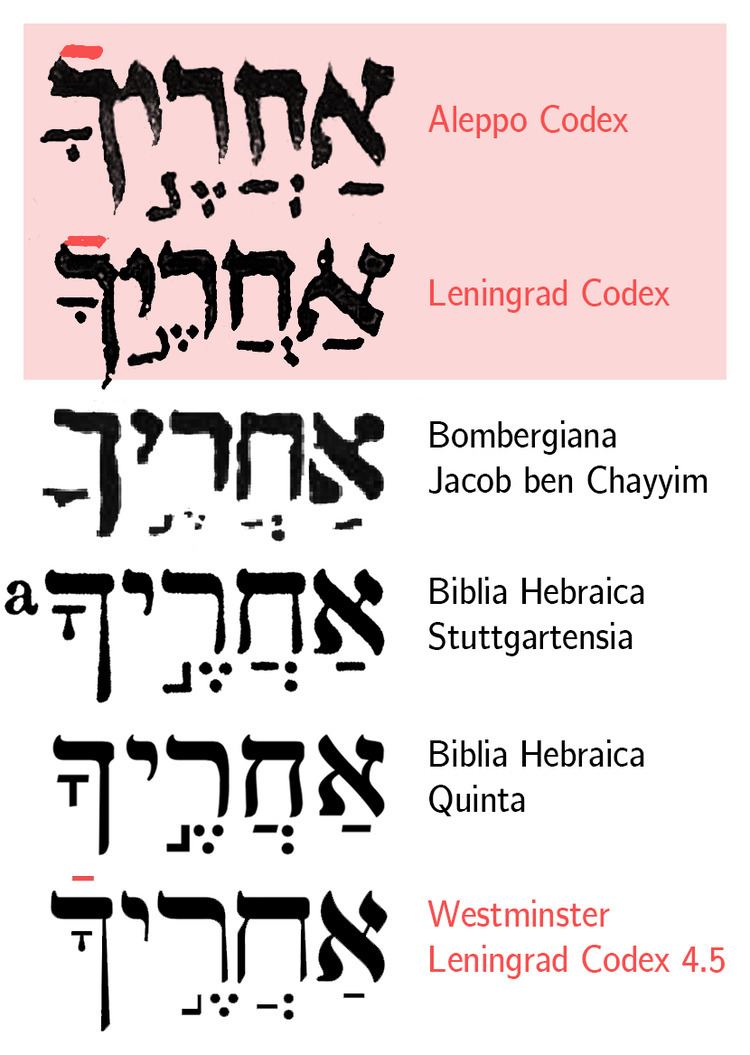 | ||
In Hebrew orthography the rafe, or more commonly spelt raphe (Hebrew: רָפֵה [ʁaˈfe]), is a diacritic (⟨ ֿ ⟩), a subtle horizontal overbar placed above certain letters to indicate that they are to be pronounced as fricatives.
It originated with the Tiberian Masoretes as part of the extended system of niqqud (vowel points), and has the opposite meaning to dagesh qal, showing that one of the letters בגדכפת is to be pronounced as a fricative and not as a plosive, or (sometimes) that a consonant is single and not double; or, as the opposite to a mappiq, to show that the letters ה or א are silent (mater lectionis).
The rafe generally fell out of use for Hebrew with the coming of printing, although according to Gesenius (1813) at that time it could still be found in a few places in printed Hebrew Bibles, where the absence of a dagesh or a mappiq was particularly to be noted. (e.g. Exodus 20:13,14,15; Deuteronomy 5:13,17,18,19; 2 Samuel 11:1; Isaiah 22:10; Jeremiah 20:17; Psalm 119:99; Zechariah 5:11)
In some siddurs (e.g. those printed by ArtScroll) a diacritical symbol, typographically the same as the rafe, but utterly unrelated, is used to mark instances of "moving sheva" (Shva Na).
The rafe is equivalent to the buailte in the old-style Irish alphabet.
Yiddish/Ladino
It retained some currency in Yiddish and Ladino, particularly to distinguish /p/ (פּ, pey) from /f/ (פֿ, fey), and to mark non-pronounced consonants.
